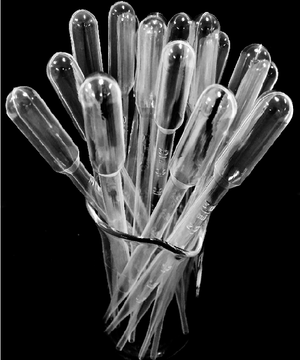Difference between revisions of "Pipette"
| Line 44: | Line 44: | ||
:[https://www.amazon.co.uk/gp/product/1782945962/ref=as_li_tl?ie=UTF8&camp=1634&creative=6738&creativeASIN=1782945962&linkCode=as2&tag=nrjc-21&linkId=476bb5c8d1dfb5c08ac81b6d4d1c98d8 ''Pipettes, pages 149, 150, 313, GCSE Chemistry, CGP, AQA ''] | :[https://www.amazon.co.uk/gp/product/1782945962/ref=as_li_tl?ie=UTF8&camp=1634&creative=6738&creativeASIN=1782945962&linkCode=as2&tag=nrjc-21&linkId=476bb5c8d1dfb5c08ac81b6d4d1c98d8 ''Pipettes, pages 149, 150, 313, GCSE Chemistry, CGP, AQA ''] | ||
:[https://www.amazon.co.uk/gp/product/1782945571/ref=as_li_tl?ie=UTF8&camp=1634&creative=6738&creativeASIN=1782945571&linkCode=as2&tag=nrjc-21&linkId=9e29fad914244909903e5e93f8a01d208 ''Pipettes, pages 52, 107, GCSE Chemistry; The Revision Guide, CGP, AQA ''] | :[https://www.amazon.co.uk/gp/product/1782945571/ref=as_li_tl?ie=UTF8&camp=1634&creative=6738&creativeASIN=1782945571&linkCode=as2&tag=nrjc-21&linkId=9e29fad914244909903e5e93f8a01d208 ''Pipettes, pages 52, 107, GCSE Chemistry; The Revision Guide, CGP, AQA ''] | ||
| + | |||
| + | ====Edexcel==== | ||
| + | |||
| + | :[https://www.amazon.co.uk/gp/product/1782945725/ref=as_li_tl?ie=UTF8&camp=1634&creative=6738&creativeASIN=1782945725&linkCode=as2&tag=nrjc-21&linkId=694be7494de75af3349537d34e13f7f0 ''Pipettes, page 109, GCSE Chemistry; The Revision Guide, CGP, Edexcel ''] | ||
| + | :[https://www.amazon.co.uk/gp/product/1782945741/ref=as_li_tl?ie=UTF8&camp=1634&creative=6738&creativeASIN=1782945741&linkCode=as2&tag=nrjc-21&linkId=30da4f2178da182547b62a7329d13b57 ''Pipettes, page 208, GCSE Combined Science; The Revision Guide, CGP, Edexcel ''] | ||
| + | :[https://www.amazon.co.uk/gp/product/1782948147/ref=as_li_tl?ie=UTF8&camp=1634&creative=6738&creativeASIN=1782948147&linkCode=as2&tag=nrjc-21&linkId=f63dcd8345f4e49c717b39a228a36c7c ''Pipettes, pages 185, 186, 320-322, GCSE Chemistry, CGP, Edexcel ''] | ||
Revision as of 12:01, 27 November 2019
Contents
Key Stage 2
Meaning
A pipette is a piece of equipment used measure and drop small amounts of a liquid.
About Pipettes
- Pipettes can be used to measure out very small amounts of liquid.
- Pipettes are usually used to take out add small amounts of liquid from one container and put it into another.
- Pipettes make it easier to move liquid from one container to another without spilling.
- Some experiments need only a single drop of liquid so you would use a pipette.
Key Stage 3
Meaning
A pipette is a piece of equipment used measure and drop small amounts of a liquid.
About Pipettes
- Pipettes usually have millilitre markings on the side.
- Pipettes can be used to measure out very small amounts of liquid.
- Pipettes are usually used to take out add small amounts of liquid from one container and put it into another.
- Some experiments need only a single drop of liquid so a pipette is used.
Key Stage 4
Meaning
A pipette is a piece of equipment used measure and drop small amounts of a liquid.
About Pipettes
- Pipettes usually have millilitre markings on the side.
- Pipettes can be used to measure out very small amounts of liquid.
- Pipettes are usually used to take out add small amounts of liquid from one container and put it into another.
- Some experiments need only a single drop of liquid so a pipette is used.
- To use a pipette accurately any bubbles trapped in the liquid in the pipette should be removed.
References
AQA
- Pipette, pages 104, 118, 150-1, GCSE Chemistry; Student Book, Collins, AQA
- Pipettes, page 126, GCSE Biology; The Revision Guide, CGP, AQA
- Pipettes, page 232, GCSE Combined Science; The Revision Guide, CGP, AQA
- Pipettes, page 235, GCSE Combined Science Trilogy; Chemistry, CGP, AQA
- Pipettes, page 289, GCSE Combined Science Trilogy; Biology, CGP, AQA
- Pipettes, page 369, GCSE Biology, CGP, AQA
- Pipettes, pages 149, 150, 313, GCSE Chemistry, CGP, AQA
- Pipettes, pages 52, 107, GCSE Chemistry; The Revision Guide, CGP, AQA
